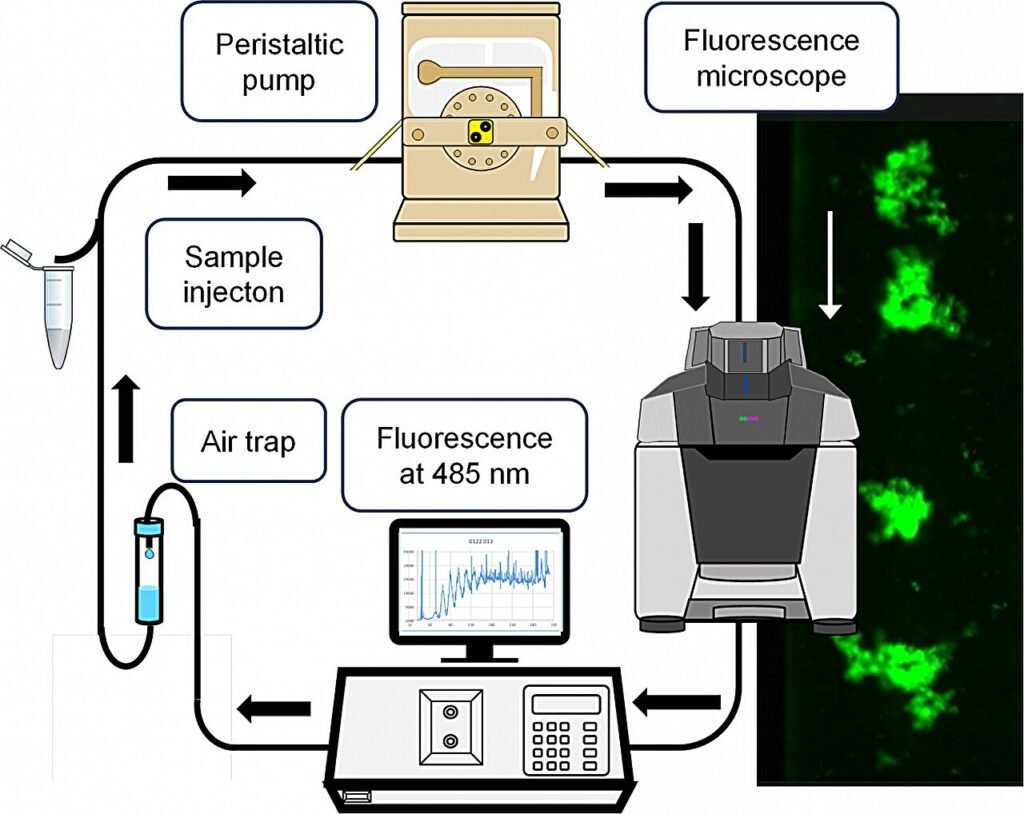The study conducted by researchers from Osaka University sheds light on a potential trigger for amyloid protein aggregation, a process linked to serious diseases like Alzheimer’s and Parkinson’s. The findings, published in npj Biosensing, reveal that high liquid flow rates can cause aggregation-prone proteins to clump together, leading to the formation of amyloid fibrils.
Amyloidosis, the underlying mechanism of these diseases, involves the accumulation of misfolded proteins into crystal-like structures in bodily fluids. Elderly individuals are particularly at risk for amyloid-related conditions, making it crucial to understand the factors that induce protein aggregation in supersaturated fluids.
Using a peristaltic pump system, the researchers observed the formation of amyloids in a model protein, hen egg white lysozyme, as it was propelled through the pump. Surprisingly, the flow through the pump effectively triggered amyloid formation in the protein. Further experiments with amyloid-forming proteins associated with human diseases confirmed this phenomenon, showing that shear stress caused by pumping motion mechanically broke supersaturation and induced amyloid formation.
The implications of these findings suggest that shear flow forces in bodily fluids like blood and cerebrospinal fluid could potentially trigger amyloid formation. Medical procedures utilizing peristaltic pumps, such as dialysis, may inadvertently contribute to amyloidosis. Understanding how shear forces impact protein supersaturation could provide valuable insights into the early stages of amyloid aggregation and aid in developing treatment strategies.
For more information, the study titled “Peristaltic pump-triggered amyloid formation suggests shear stresses are in vivo risks for amyloid nucleation” can be found in npj Biosensing. The DOI for the research is DOI: 10.1038/s44328-025-00027-0.
In conclusion, this research highlights the role of peristaltic pump flow as a potential trigger for amyloid protein aggregation, raising awareness of the importance of shear forces in understanding the mechanisms of amyloid-related diseases. The study underscores the need for further exploration into how shear stress impacts protein behavior and its implications for disease development.


